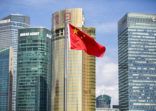Put simply, a new consumption culture within China is emerging. The proportion of the population born after the Deng Xiaoping era has just reached tipping point, accounting for more than half of the population in 2015 and likely to grow to two-thirds in five years.
This generation (born from the 1980s onwards) has seen unprecedented stability and relative prosperity in comparison to previous generations, engendering greater confidence and money to spend on their own wellbeing, personal fulfilment and entertainment.
Market challenges
A vibrant emerging economy, China is undoubtedly a challenging market to explore, with only those with a great understanding of the market and the nature of Chinese investing likely to succeed.
A report from China Securities and Deposit Clearing (CSDC) shows more than 95% of investors are individuals, noted for a greater sensitivity to information and less tolerance of volatility. This is key given that in the Chinese market, any piece of news, confirmed or otherwise, can cause a sharp and significant impact on market participants’ behaviour, as illustrated by events in 2015-16.
2015 will remain unforgettable for most investors with the Chinese stock market experiencing two steep moves. Between July 2014 and June 2015, the Shanghai Composite Index increased by more than 130%, a trend long-awaited by market participants who had experienced a five-year bear market previously.
Yet from a macroeconomic perspective, there was no significant improvement in the underlying fundamentals. CPI was only around 1.5%, causing deflation concerns, and PPI had been negative since March 2012. Supply-side reform continued to add extra pressure on industrial and material sectors. The PMI hovered around 50, which was not yet a confirmation signal for any sort of recovery.
What then drove this rise?
Excessive liquidity has always provided the ‘speculative fuel’. Starting in late 2014, margin financing (using borrowed money to trade shares) was liberalised, enabling traders to place even greater sums on the equity market. Increasing leverage soon became the main support for the market uptrend.
However, this sudden rise would be short-lived. A sudden tightening on margin financing was quickly announced in June, instantly halting the craziness and resulting in a huge market sell-off.
During the next three months, the Shanghai Composite Index would lose 50%.
















